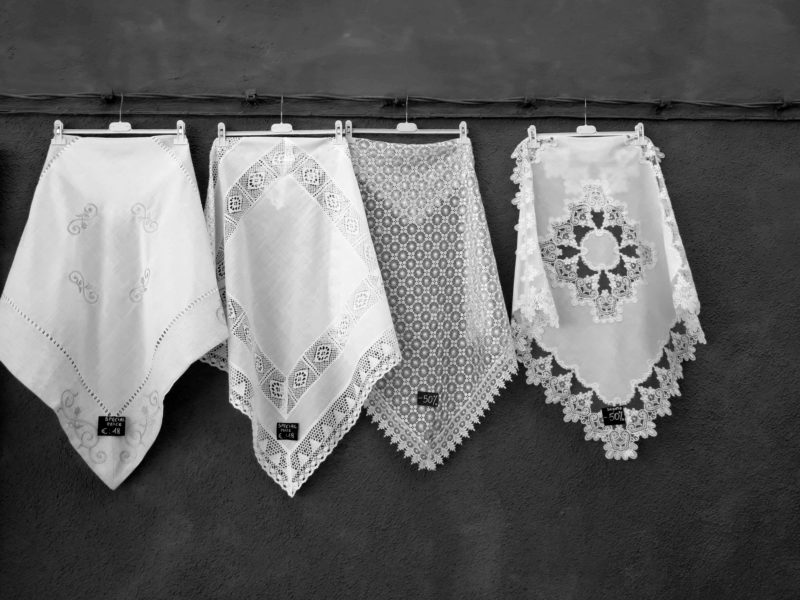Fabric(action)s
· A short history of lace and its depictions in art ·

This week will be devoted to fabric. Velvet, cotton, curtains, linen on laundry lines, you’ll be surprised how many interesting facts are associated with stuff we usually ignore. Ignore, that is, until we see it painted and can’t believe how intricate these renderings are, how superbly crafted and deceptively life-like.
As you have guessed, we’ll start with lace. The history is a long one, with mention of it in the old testament, and lacy hairnets found in Egyptian tombs. It took off, though, in the 16th century, first reserved for high ranking clergy, then taking over at the courts of Europe. Some countries exchanged the basic materials for the final product, with Belgium, for example providing finest flax (by now extinct, since fertilization and crossbreeding made the fibers less soft) to France for their centers of lace making. Italy, and in particular Venice, was the cradle of much of the skill, and the court threatened those workers who were lured to France to teach lace-making, with holding their families hostage to the point of execution. (I photographed the handmade lace in Burano, an island of lace makers off the coast of Venice.) Lace became so desired as a status symbol that it was worth smuggling it across borders (sometimes in loaves of bread, sometimes in coffins where much of the body had been removed to make space) despite the harsh punishments if caught. There is a lace guild in England which runs a museum in Stourbridge and provides detailed historical information. https://www.laceguild.org/craft/history.html

The interesting part is of course how artists have rendered this delicate fabric and I will give one example here – but point you to a terrific collection of artists and their works here http://www.sophieploeg.com/blog/the-10-best-lace-paintings. Her essay with illustrations gives a cross section of paintings across the centuries, with interesting commentary. I chose the Portrait of a Woman, Possibly Maria Trip, Rembrandt Harmensz. van Rijn, 1639 as my personal favorite, which can now be visited in the Rijksmuseum. It is astonishingly detailed and beautiful.

